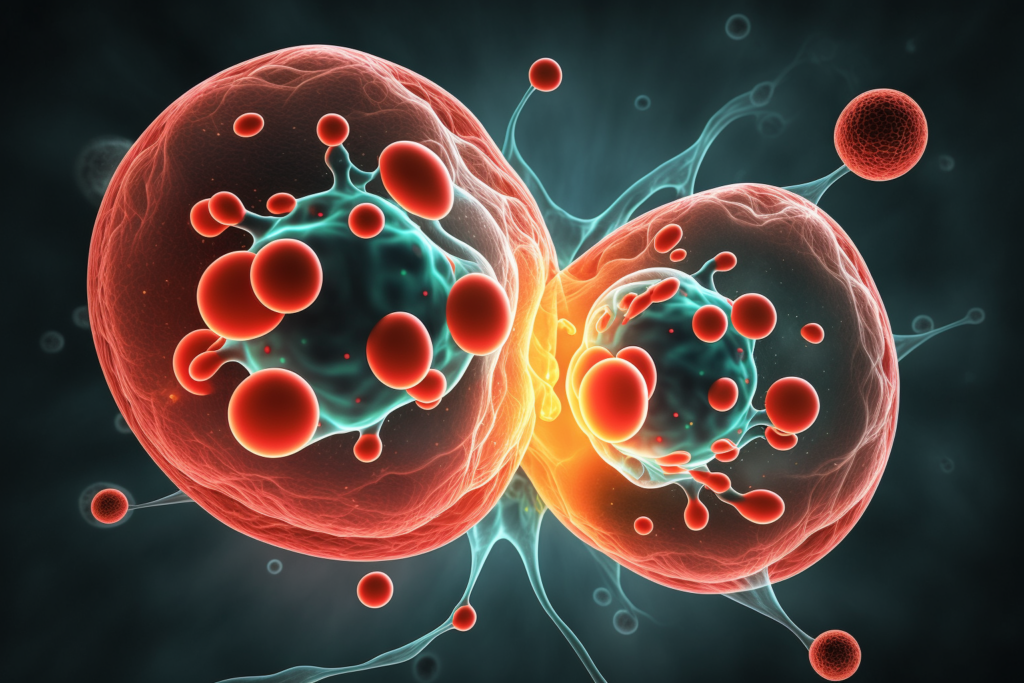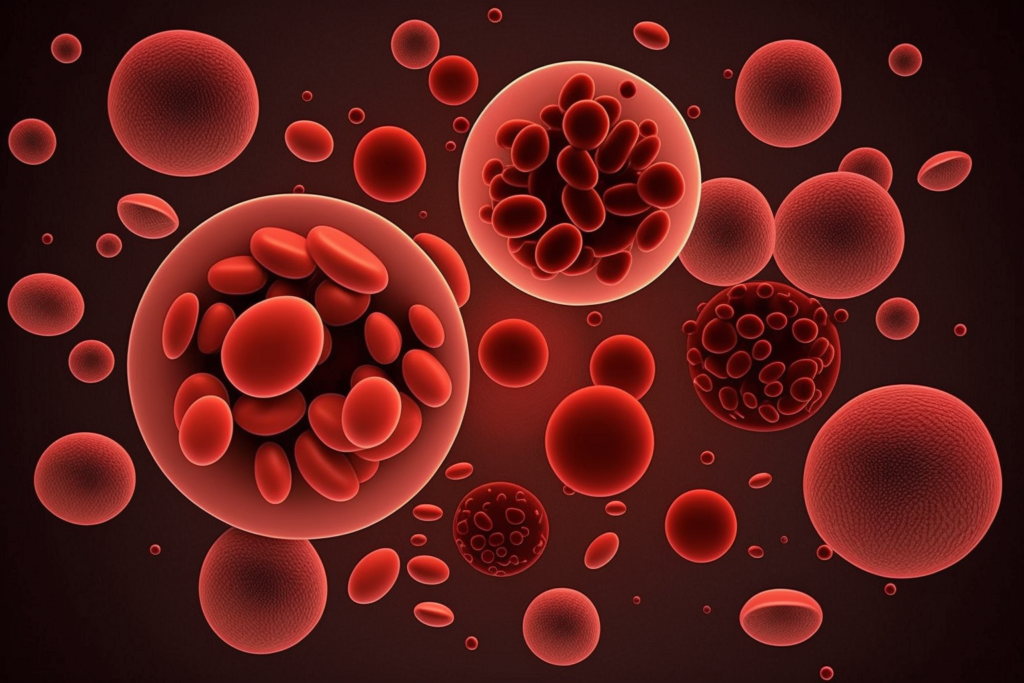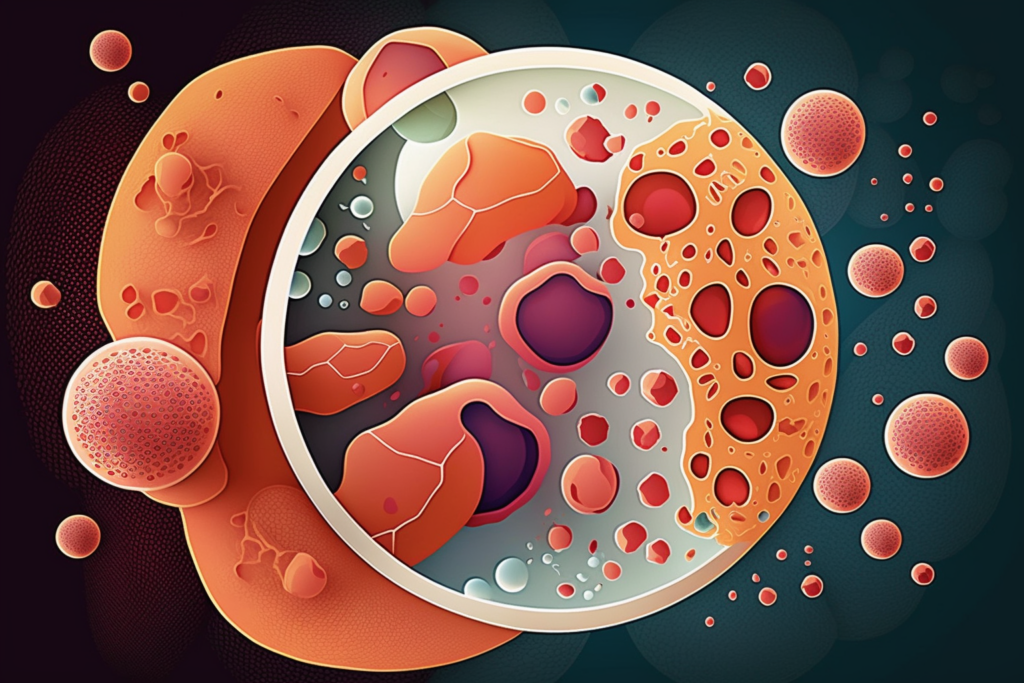
What is Cord Blood Stem Cell Therapy?
Cord blood stem cell therapy is a cutting-edge treatment that uses the stem cells found in the blood of a newborn’s umbilical cord and placenta.
These stem cells have the ability to differentiate into various types of cells, including those that form blood, bone, and tissue. The potential applications of cord blood stem cell therapy are vast, ranging from the treatment of blood disorders like leukemia and lymphoma to the repair of damaged tissue in the heart, brain, and other organs.
The Science Behind Cord Blood Stem Cells
The science behind cord blood stem cells is complex but fascinating. Cord blood stem cells are unique in that they are able to differentiate into various types of cells.
The stem cells found in cord blood are less mature than other sources of stem cells, such as bone marrow, which makes them less likely to cause graft-versus-host disease (GVHD) and reduces the need for an exact match between the donor and recipient.
Additionally, cord blood cells are less likely to be rejected by the recipient’s body, making them a valuable resource for regenerative medicine and stem cell therapy.
Cord blood stem cells are also capable of self-renewal, meaning that they can reproduce themselves and create new stem cells. This property makes them an ideal resource for researchers and medical professionals looking to develop new therapies and treatments for a wide range of medical conditions.
Cord blood stem cells’ extraordinary capacity to transition into a variety of cell types has made them an essential resource for scientists studying cellular growth and tissue regeneration.
The study of cord blood stem cells has led to many exciting advancements in the field of regenerative medicine. Researchers are exploring the potential of cord blood stem cells for the treatment of various medical conditions, including blood disorders, metabolic disorders, immune system disorders, and neurological disorders.
Additionally, cord blood cells are being used in clinical trials for the treatment of heart disease, stroke, and other conditions. The use of cord blood stem cells in regenerative medicine has the potential to revolutionize the treatment of many medical conditions and improve the quality of life for millions of people worldwide.
What are Blood-Forming Stem Cells?

Hematopoietic stem cells, or blood-forming stem cells, are a remarkable type of stem cell found in the bone marrow and cord blood that can transform into diverse types of blood cells.
These cells are responsible for producing all of the different types of blood cells found in the human body, including white blood cells, red blood cells, and platelets.
The process of blood cell formation, or hematopoiesis, begins with the differentiation of blood-forming stem cells into various types of progenitor cells, which can then differentiate into different types of blood cells.
This process is regulated by a complex network of signaling molecules and growth factors that control the proliferation, differentiation, and maturation of blood cells.
Blood-forming stem cells are critical for maintaining a healthy immune system and are essential for the treatment of many medical conditions. .
In some cases, cord blood stem cells may also be used as an alternative source of blood-forming stem cells for bone marrow transplantation.
In addition to their role in blood cell formation, blood-forming stem cells have also been shown to have the potential to differentiate into other types of cells, including those that form bone, cartilage, and muscle. This property makes them a valuable resource for regenerative medicine and stem cell therapy.
How are Cord Blood Stem Cells Collected?
Cord blood stem cells are collected immediately after the birth of the baby, and the umbilical cord has been cut. The collection process is non-invasive and does not pose any risks to the baby or mother.
There are two methods for collecting cord blood cells: the syringe method and the bag method.
The syringe method involves using a syringe to draw blood from the umbilical cord vein. The collected blood is then transferred to a sterile container and sent to a cord blood bank for processing and storage.
This method is preferred by some doctors and medical professionals because it allows for a more precise collection of cord blood stem cells.
The bag method involves using a sterile collection bag to collect the cord blood. The collection bag is attached to the umbilical cord and placed in a special container to ensure the proper collection and storage of the cord blood cells. This method is less precise than the syringe method, but it is simpler and less expensive.
Once collected, the cord blood stem cells are processed to extract the stem cells and remove any red blood cells or other contaminants.
After being processed, cord blood stem cells are carefully preserved in a cryogenic state and placed into storage at a reliable cord blood bank for potential future use.
Cord blood stem cells can be stored for many years, and they are available for use in stem cell therapy when needed.
How do Cord Blood Stem Cells Differ from Other Stem Cells?
Cord blood stem cells are a unique type of stem cell that differs from other sources of stem cells in several ways.
One of the primary differences is that cord blood stem cells are less mature than other sources of stem cells, such as bone marrow stem cells. This property makes them less likely to cause graft-versus-host disease (GVHD) and reduces the need for an exact match between the donor and recipient.
Another difference between cord blood stem cells and other sources of stem cells is their ability to differentiate into various types of cells. These type of stem cells have been shown to differentiate into not only blood cells but also cells that form bone, cartilage, muscle, and other tissues. This property makes them a valuable resource for regenerative medicine and stem cell therapy.
Cord blood stem cells also differ from other sources of stem cells in terms of their availability. Cord blood can be collected immediately after a baby is born, and the collection process is non-invasive and does not pose any risks to the baby or mother. This makes cord blood stem cells a more readily available resource than other sources of stem cells, such as bone marrow, which must be harvested from a donor.
In addition to these differences, cord blood stem cells also have a lower risk of transmitting infections than other sources of stem cells. This is because cord blood is collected from the umbilical cord and placenta after the baby is born, and the collection process is done in a sterile environment.
Conditions Treated with Cord Blood Stem Cell Therapy
Cord blood stem cell therapy has shown great promise in treating various medical conditions, particularly those related to blood, metabolism, and the immune system.
Blood Disorders

Blood disorders such as leukemia, lymphoma, and sickle cell disease can be treated with cord blood stem cell therapy.
Cord blood stem cells can differentiate into various types of blood cells which are essential for the proper functioning of the immune system and the transport of oxygen and nutrients throughout the body.
The process of cord blood stem cell therapy for the treatment of blood disorders typically involves the collection of cord blood from a newborn immediately after birth. The collected child’s cord blood is then processed to extract the stem cells, which are stored in a stem cell bank for future use.
If necessary, the stem cells are administered intravenously to a patient’s bloodstream and travel to their bone marrow; this allows them to generate new blood cells.
Cord blood stem cell therapy is an effective treatment for many types of blood disorders, particularly in patients who do not have a suitable donor for bone marrow transplants.
Additionally, ongoing research in the field of cord blood stem cell therapy is likely to uncover new applications and benefits for this innovative treatment.
Metabolic Disorders

Metabolic disorders are a group of genetic diseases that affect the body’s ability to process nutrients and produce energy.
These disorders can lead to a wide range of symptoms and complications, including developmental delays, intellectual disability, seizures, and organ damage.
While there is currently no cure for most metabolic disorders, cord blood stem cell therapy has shown promise as a potential treatment option.
Cord blood stem cells can differentiate into various types of cells, including those that produce enzymes and other proteins that are essential for the proper function of the body’s metabolic pathways.
In patients with metabolic disorders, the transplanted stem cells can produce the missing enzymes and proteins, which can help to alleviate symptoms and improve overall health.
One of the most promising applications of cord blood stem cell therapy for the treatment of metabolic disorders is for the treatment of lysosomal storage diseases, a group of disorders that affect the body’s ability to break down and dispose of cellular waste.
In these disorders, the buildup of waste products can lead to organ damage and other complications. Cord blood stem cell therapy has been shown to be effective in replacing the missing enzymes that are needed to break down the waste products, which can slow or even stop the progression of the disease.
While cord blood stem cell therapy is still in the early stages of development for the treatment of metabolic disorders, early results have been promising. Ongoing research in this field is likely to uncover new applications and benefits for this innovative treatment, and it may become a valuable tool in the treatment of a wide range of metabolic disorders.
Immune System Disorders
Immune system disorders – varying from gentle to severe intensity – cause the body to become vulnerable and unable to defend itself against infections and diseases.
These conditions can be caused by genetic factors, contagious illnesses, or autoimmune issues.
While treating immune system disorders can be complex, cord blood stem cell therapy has demonstrated potential to deliver successful results.
Cord blood stem cells possess the remarkable capacity to morph into a variety of immune system components, such as T-cells and natural killer cells. These specialized cells are particularly useful in treating disorders connected with an impaired or weakened immunity, since they can restore balance and optimize response mechanisms within the body’s defense network.
Cord blood stem cell therapy is an exceptionally promising means of treating severe combined immunodeficiency (SCID), often referred to as “bubble boy” disease. This rare genetic disorder hinders the body’s capacity to generate T-cells and other essential immune cells, leaving patients susceptible to infections and further illnesses. Fortunately, cord blood stem cell therapy has proved effective in replenishing those missing elements and bolstering the patient’s immunity once again!
Cord blood stem cell treatments have also been investigated for the treatment of autoimmune disorders, such as multiple sclerosis and rheumatoid arthritis.
In these disorders, the body’s immune system mistakenly attacks healthy tissues, leading to inflammation and damage. Cord blood stem cell therapy may help to regulate the immune system and reduce inflammation, which could potentially alleviate symptoms and improve quality of life.
The Benefits of Cord Blood Stem Cell Therapy
Advantages Over Other Stem Cell Sources
Cord blood cells have several advantages over other sources of stem cells, making them a valuable resource for regenerative medicine.
No Risk to the Donor
One of the primary advantages is that there is no risk to the donor during the collection process.
Cord blood stem cells are collected from the umbilical cord and placenta after a baby is born, meaning there is no harm to the mother or the baby during the collection process.
This is in contrast to other sources of stem cells, such as bone marrow, which requires a surgical procedure that carries some risk to the donor.
Low Risk of Graft vs Host Disease
Another advantage of cord blood stem cells is that they have a lower risk of causing graft-vs-host disease (GVHD) than other sources of stem cells.
GVHD occurs when the immune cells in the transplanted stem cells attack the recipient’s cells, leading to a range of symptoms and complications.
Because cord blood stem cells are less mature than other stem cells, they are less likely to cause GVHD. This property makes cord blood stem cells particularly valuable for patients who cannot find a perfect match for stem cell transplantation.
Greater Tissue Compatibility
Cord blood stem cells also have greater tissue compatibility than other sources of stem cells, which can help reduce the risk of rejection by the recipient’s body.
Because these stem cells are less mature than other stem cells, they have not yet developed immune responses that could cause rejection. This means that cord blood stem cells can be used in transplants without requiring an exact match between the donor and the recipient.
This property makes cord blood stem cells particularly valuable for patients needing a stem cell transplant but who cannot find a perfect match.
Potential Future Applications

Great potential to revolutionize the treatment of various medical conditions, including diabetes, heart disease, and neurological disorders.
Diabetes
Diabetes is a chronic condition that affects millions of people worldwide. Researchers have shown that cord blood stem cells can differentiate into pancreatic cells that produce insulin, the hormone that regulates blood sugar levels.
This property makes these stem cells a promising tool for developing a cure for diabetes or improving current treatment options.
Heart Disease
Heart disease is another condition that could potentially benefit from the use of cord blood stem cells. The heart contains a small number of stem cells that can differentiate into heart muscle cells, but this ability is limited.
Cord blood stem cells have the potential to differentiate into a broader range of heart cells, including those that form the heart’s blood vessels and valves.
By using cord blood stem cells to regenerate damaged heart tissue, researchers may be able to repair heart damage caused by heart attacks, heart failure, or other conditions.
Neurological Disorders
Neurological disorders like Parkinson’s disease, Alzheimer’s disease, and spinal cord injuries are other areas where cord blood stem cells show great promise.
These disorders are characterized by the degeneration or loss of specific types of cells in the brain or spinal cord.
Cord blood stem cells have the potential to differentiate into these specific cell types, making them a valuable tool for repairing damaged or diseased neural tissue.
By using cord blood stem cells to regenerate neural tissue, researchers may be able to slow or even reverse the progression of these debilitating disorders.
The Cord Blood Stem Cell Transplant Process
Finding a Match
Securing a compatible match for cord blood transplantation is vital to ensuring optimal results. There are several options for finding a match, including cord blood banking, public cord blood banks, and sibling cord blood donation.
Cord Blood Banking
Cord blood banking is a private option where parents can choose to store their baby’s cord blood stem cells in a private bank for future use.
This option ensures that the baby’s cord blood stem cells are available for their own use if needed. However, the cost of cord blood banking can be high, and there is no guarantee that the stored cord blood stem cells will be a suitable match if they need a stem cell transplant in the future.
Public Cord Blood Banks
Another possible option for finding a match for cord blood transplantation. These banks collect cord blood stem cells from volunteer donors and store them for potential use in stem cell therapies.
This option increases the chances of finding a suitable match for a stem cell transplant, as there is a large pool of potential donors.
However, the process of finding a match from publicly banked cord blood stem cells can be more challenging than using privately banked cord blood stem cells, as the matching process can take longer, and there may be a limited supply of suitable matches.
Sibling Cord Blood Donation
Sibling cord blood donation is a third option for finding a match for cord blood transplantation.
In this scenario, a sibling of the patient who needs the stem cell transplant donates their cord blood stem cells.
Sibling cord blood donation increases the chances of finding a suitable match, as siblings are more likely to have compatible tissue types.
This option is often considered a better alternative to public cord blood banks, as it reduces the risk of complications from using stem cells from an unrelated donor. However, not all siblings are a suitable match, and there is no guarantee that a sibling will be a match for the patient in need.
Cord Blood Stem Cell Transplant Procedure
Cord blood stem cell transplantation is a complex medical procedure that involves several stages, including conditioning, infusion, and recovery.
Conditioning
The first stage of the procedure is conditioning, which involves using chemotherapy or radiation therapy to prepare the patient’s body for the infusion of cord blood stem cells.
This process is necessary to make space for the new stem cells and reduce the risk of rejection by the patient’s immune system.
Conditioning may also help to kill cancer cells in patients with blood or bone marrow cancers.
Infusion
The second stage of the procedure is infusion, where the collected cord blood stem cells are introduced into the patient’s bloodstream through an IV catheter.
The stem cells travel to the bone marrow, where they start to produce new blood cells and restore the patient’s immune system. The infusion process usually takes a few hours, and the patient may experience some side effects, such as fever, chills, and nausea.
The medical team will monitor the patient closely during the infusion and may provide medication to manage side effects.
Recovery
The final stage of the procedure is recovery, which can take several weeks or months, depending on the patient’s condition.
During this time, the patient will need to stay in the hospital and undergo frequent medical checks to monitor their progress.
The medical team may provide medication to help manage symptoms like pain, fever, and infection.
As the patient’s immune system starts to recover, they will become more vulnerable to infections, and special precautions will be taken to reduce the risk of infection.
In conclusion, cord blood stem cell transplantation is a complex medical procedure that involves several stages, including conditioning, infusion, and recovery.
The procedure is commonly used to treat various medical conditions, including blood and bone marrow cancers, immune system disorders, and metabolic disorders.
While cord blood stem cell transplantation is a promising treatment, it is not without risks, and patients should consult with their doctors to determine if this treatment is right for them.
Click here to find out more about other types of stem cell therapies.
*** All content on NationalStemCellTherapy.com is for informational purposes only. All medical questions and concerns should always be consulted with your licensed healthcare provider.
